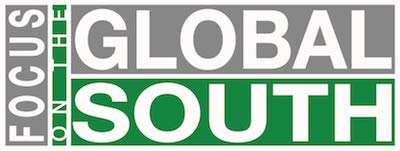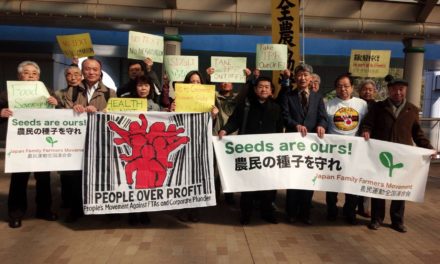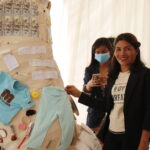by Walden Bello, the Nation Newspaper, 4 December, 1997, Bangkok, Thailand
The dependency on foreign capital to bring about rapid industrialisation has resulted in profligate spending in Southeast Asia, says Walden Bello in the second of a three-part series.
A close look at two countries, Thailand and the Philippines, will reveal the dynamics of the rise and unravelling of what some observers came to describe as foreign-capital-driven ”fast track capitalism”.
In the case of Thailand, net portfolio investment, or speculative capital inflow, came to around US$24 billion in the last three to four years, while another $50 billion came in the form of loans via the innovative Bangkok International Banking Facility (BIBF), which allowed foreign and local banks to make dollar loan enterprises at much lower rates of interest than those on baht loans.
With the wide differences — some 600 to 700 basis points — between US interest rates and interest rates on baht loans, local commercial banks could borrow abroad and still make a clean profit relending the dollars to local customers at lower rates than those of baht loans.
Thai banks and finance companies had no problems borrowing abroad. With the ultimate collateral being an economy that was growing at an average rate of 10 per cent per annum — the fastest in the world in the decade from 1985 to 1995 — Bangkok became a debtors’ market.
By one account that appeared in 1995 in a leading Asian financial magazine, ”with the country’s positive outlook, competition to lend to Thai banks and finance companies has been intense … [and] … as a result of stiff competition, pricing levels in some cases are not presented entirely in the financial fundamentals of the borrower. Many banks in Asia are anxious to develop good relationships rather that to make money.”
Rewriting history
Contrary to current attempts to rewrite recent history by Bretton Woods institutions, the massive inflow of foreign capital did not alarm the World Bank and the IMF, though short-term debt came to $41 billion of Thailand’s $83 billion foreign debt by 1995.
In fact, the World Bank and the IMF were not greatly bothered by the conjunction of a sky-rocketting foreign debt and a burgeoning current account deficit (or the deficit in the country’s trade in goods and services) which came to six to eight per cent of GDP in the mid-1990s. At the height of the borrowing spree in 1994, the official line of the World Bank on Thailand was:
”Thailand provides an excellent example of the dividends to be obtained through outward orientation, receptivity to foreign investment, and a market-friendly philosophy backed by conservative macro-economic management and cautious external borrowing policies.”
Indeed, as late as 1996 while expressing some concern with the huge capital flows, the IMF was still praising Thai authorities for their ”consistent record of sound macro-economic management policies”. While the IMF recommended ”a greater degree of exchange rate flexibility”, there was certainly no advice to let the baht float freely.
The complacency of the Bretton Woods institutions when it came to Thailand — indeed, their failure to fully appreciate the danger signals — is traced by some analysts to the fact that it was not incurred and financed by government but by the private sector. Indeed, the high current account deficits of the early 1990s coincided with the government running budget surpluses. As a group of perceptive Indian economists noted, ”Part of the reason for this silence was the perception that an external account deficit is acceptable so long as it does not reflect a deficit on the government’s budget but ‘merely’ an excess of private investment over private domestic savings.”
In this view, countries with significant budget deficits, such as India in 1991, were regarded as profligate even when their current account deficit was lower than Thailand’s. The latter’s deficit, because it was not incurred by government and not financed by public expenditures was simply reflecting ”the appropriate environment for foreign private investment rather than public or private profligacy”.
Since the financial flows were conducted by private actors, there was no need to worry since they would be subject to the self-correcting mechanisms of the market. That, at least, was the theory.
Different story
Had these foreign capital inflows gone into the truly productive sectors of the economy, like manufacturing and agriculture, the story might have been different.
But they went instead principally to fuel assets — inflation in the stock market and in real estate, which were seen as the most attractive areas in terms of providing high yield with a quick turnaround time. Indeed, the promise of easy profits via speculation subverted the real economy as manufacturers in Thailand and the Philippines, instead of plowing their profits into upgrading their technology or the skills of their workforce, gambled much of them in real estate and the stock market.
The inflow of foreign portfolio investment and foreign loans into real estate led to a construction frenzy that has resulted in a situation of massive oversupply of residential and commercial property structures that dotted the Bangkok countryside, which was the pre-eminent sign of the Thai boom. By 1996, they were signs of doom.
By the end of that year, an estimated $20 billion worth of new residential and commercial property in Bangkok remained unsold. Monuments to the property folly were evident everywhere, such as Bangkok Land Co’s massive but virtually deserted residential complex near Don Muang International Airport and the sleek but near empty 30-storey towers in the Bangna-Trat area. Yet as of mid-1997, developers were still rushing new high-rises to completion.
In Manila, by the beginning of 1997, the question was no longer if there would be a glut in real estate. The question was how big it would ultimately be, with one investment analyst projecting that by the year 2000, the supply of high-rise residential units would exceed demand by 211 per cent while the supply of commercial units would outpace demand by 142 per cent. Indeed, in their efforts to cut their losses in the developing glut, worried real estate developers refrained from major new investments in office space and condos, pouring billions of pesos instead into tourist resorts and golf courses.
Oversupply also overtook property development in Kuala Lumpur and Jakarta, and this spelled bad news for commercial banks and finance companies in all four countries since they were heavily exposed in terms of real estate loans. As a percentage of commercial banks’ total exposure, real estate or real estate-related loans came to 15 to 25 per cent in the case of the Philippines and 20 to 25 per cent in the case of Malaysia and Indonesia.
In Thailand, where the exposure in real estate was grossly underestimated by official figures and calculated by some to come to as much as 40 per cent of total bank loans, half of the loans made to property developers were said to be ”non-performing” by early 1997.
Self-correcting mechanisms
Unchecked by any significant controls by governments that had internalised the IMF’s and World Bank’s theory about the self-correcting mechanisms of the financial market, the frenzied flow of capital had led to the creation of a giant speculative bubble over the real economy that could only explode in a highly destabilising fashion.
It was the massive oversupply in the real estate sector that underlined to foreign investors and creditors that, despite creative accounting techniques, many of the country’s finance companies that had borrowed heavily, floated bonds, or sold equities to them were saddled with billions of dollars worth of bad loans.
This led them to reassess their position in Thailand in the beginning of 1997. And they began to panic when they saw the real estate glut in their context of the country’s deteriorating macro-economic indicators, like a large current account deficit, an export growth rate of zero in 1996, and a burgeoning foreign debt of $89 billion, half of which was due in a few months’ time.
Of these figures, the current account deficit loomed largest in foreign investors’ consciousnesses, since it was said to be the most sensitive indicator of whether or not a country would be able to earn enough foreign exchange in order to service its foreign debt. Nevertheless, during the boom years, investment analysts shrugged off deficits that came to eight to 11 per cent of GDP and continued to give Thailand A to AA + credit ratings on the strength of its high GDP growth rate.
However, the combination of the massive buildup of private debt and the real estate glut put the country’s ”macroeconomic fundamentals”, to borrow investors’ jargon, in a new, and to many, scary light in 1997. Thailand’s deficit in 1996 came to 8.2 per cent of GDP, and this was now emphasised as roughly the same figure as that of Mexico when that economy suffered its financial meltdown in December 1994.
It was time to get out fast, and with over $20 billion jostling around in Bangkok parked in speculative investments in Thai companies or non-resident bank accounts, the stampede was potentially catastrophic — for it meant the unloading of trillions of baht for dollars. With so many baht chasing too few dollars, the result was a tremendous downward pressure on the value of the baht, making it difficult to maintain the now sacrosanct Bt25 to the dollar rate.
By the end of August, the ”fixing” of the dollar value of the Thai baht, Malaysian ringgit, Indonesian rupiah, and the Philippine peso that had been one of the ingredients of the ”Southeast Asian economic miracle” had been abandoned by all the region’s central banks, as the currencies were allowed to seek their own value in the brave new world of the free float.
Part three: There will be more dark before there is light at the end of the Southeast Asian economic tunnel.
————-
Walden Bello, a contributing editor for The Nation, is a professor of sociology and public administration at the University of the Philippines and co-director of Focus on the Global South at Chulalongkorn University’s Social Research Institute. He is the author of nine books on East Asian economic and political issues, including the forthcoming ”A Siamese Tragedy: Development and Disaster in Modern-Day Thailand”.







